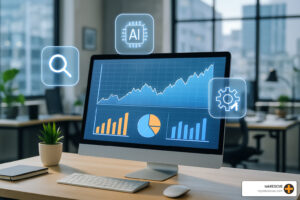

Managing the Cybersecurity Vulnerabilities of Artificial Intelligence
AI can increase productivity through performing tedious tasks such as routine maintenance while freeing the time of employees to a lot their time to other tasks. This might sound like an ideal situation, but in fact, there is a drawback; Security. Security is always a concern when it comes to AI.
AI systems are vulnerable to the same types of threats that afflict information systems in general, and cybersecurity is an effective approach for addressing these threats.
The primary threat to AI systems is the subversion of the software that implements them. The basic idea is to fool AI systems into drawing incorrect inferences from inputs or outputs they receive or generate, respectively. To do this, adversarial examples—inputs (e.g., images) or outputs (e.g., speech) specifically crafted to be misclassified by a target AI system—are a powerful technique. Adversarial examples can evade most current defenses against cyberattacks because they reflect common data artifacts rather than being engineered exploits.
For example, something called an Artificial Intelligence Attack can be launched on an AI System. In an attack such as this, the execution of the attack is not done in a traditional way. In traditional hacks, hackers find vulnerabilities in human-written code and exploit them. When it comes to AI attacks, the set of entities, such as physical objects, can be expanded to include things that could be corrupting to the overall functionality of the AI system. For example, a stop sign could be transformed into a green light in the eyes of an AI system through an AI attack, causing a self-driving car to zoom through a stop sign potentially harming or killing pedestrians.
Exactly What Are We Going to Do About This Problem?
To overcome this issue, it has been proposed that AI should be viewed similarly to other software, as always being potentially vulnerable to attacks. It has also been recommended that when it comes to AI, cybersecurity initiatives should be amended to envelop the vulnerabilities of AI systems and all their aspects. The goal is to see AI models as just another type of software that needs the same amount of effort and attention security-wise as any other software would need to ensure its integrity is kept in place.
It is also proposed that an updated vulnerability disclosure of various AI systems be kept, and routinely updated as new vulnerabilities are discovered. The vulnerabilities are to be discovered through initiatives designed to reward those who are able to discover them.
Who it benefits
When it comes to ensuring the security of AI systems, everyone benefits, but there are some entities that benefit more than others. Among those are the Military, law enforcement, and the civil sector. Because of the nature of the work that they do and the amount of sensitive data that they handle, they are obvious targets for attacks. Now that AI is more widely used for day to day tasks in these entities, ensuring that the AI systems being used are not corrupted on a daily basis much like security on networks are managed daily is critical to ensure that AI systems are not weaponized to work against the companies that they are implemented to help.
In Conclusion
The rise of AI and its use in the public and private sectors to increase productivity has been revolutionary. With innovation such as these, it can be assumed that there will be a multitude of risks, and taking these seriously is critical when it comes to ensuring the safe use of AI systems.
Table of Contents



